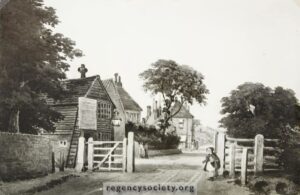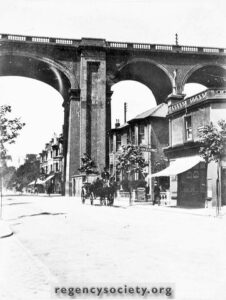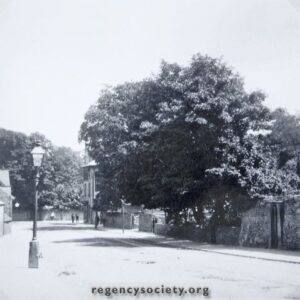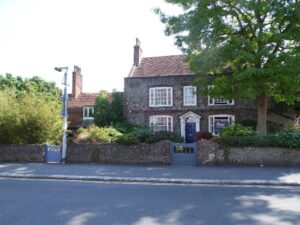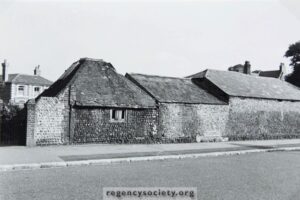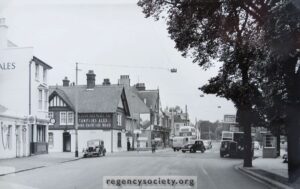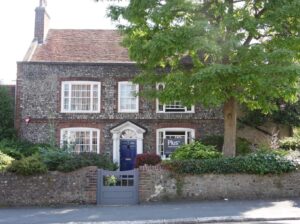History of Preston Park House
Update (June 2025): We’ve moved – across the car park!
After more than two decades at Preston Park House (and the building previously known as The Old Cottage), Plus Accounting has relocated just a short walk across the car park to our newly refurbished offices at Stanford Gate. To keep the continuity our clients and team value, Stanford Gate will be renamed Preston Park House, and the original building will revert to its historic name, The Old Cottage.
Why the move? Owning and shaping the new Preston Park House gives us space to grow, room to collaborate, and the opportunity to create an office that better reflects who we are, an independent, values-led, B Corp-certified firm rooted in Brighton.
Our history is important to us, it shows where we’ve come from and why we do what we do. Moving to the new Preston Park House is the next chapter in that story: the same Plus Accounting people, the same commitment to clients and community, and a refreshed space that helps us deliver even better service.
Many people would often comment on the history and features of our previous office on South Road and always asked the question, “…so how old is the building?”
We therefore decided to take on a little investigative project on the building’s history and connection with Preston Manor and in doing so came across some great pictures of Preston Village and also some interesting historical facts about the area.
With a little help from the Regency Society, Selma Montford of the Patcham Society and their book, “Preston: Downland Village to Brighton Suburb”, we have managed to produce an article on the history of Preston Park House and the surrounding area:
History of Preston Park House (The Old Cottage), South Road, Brighton
The 1876 Ordnance Survey map of Preston shows a much smaller settlement than at present. Preston Village was initially only made up of approximately 180 people and the land was predominately owned by The Stanfords of Preston Manor. The land around the Manor was farmed and Villagers began to open up shops and businesses and it became a very self sufficient Village.
A very early picture of the area (see below) shows Preston Tollgate, which was erected in 1810. It stood about 20 yards south of the present South Road and was removed in November 1854.
The 1841 railway line cut through the land from north to south and ran parallel the main London-Brighton road.
Between the main road and the railway line, and immediately south of South Road, was Preston Farm, the Stanford’s Home Farm – for their produce only, abutted South Road.
The former farmhouse, now dividend into Little Barn, Mulberry Cottage and Old Cottage (Preston Park House), in South Road, is all that remains of these buiildings, and the former farmyard is now the Shell Garage, built in the early 70s, on the site of a public house, the Black Lion.
The Old Cottage (Preston Park House)
The 1876 Ordnance Survey map shows that between South Road and Middle Road much of the land was taken up with a large brewery, now a modern complex of 14 houses, Preston Village Mews.
In the early 1900s South Road still had premises which were linked with Preston Village’s rural past: a baker; corn, hay & straw merchant, all trading from the same premises.
A 1908 plan shows new offices and shops with stables at the back. It also shows the elevation of a temporary joiners’ workshop (on part of the site of the present Preston Bowls Club).
By 1910 these had become a furniture department & stables, though by 1925 they were just furniture removals, Fellingham & Co, on the corner of South Road and Preston Road.
The Black Lion was the smallest of the three pubs in the Village but was an attractive three story building with a cobbled wall fronting a small garden to the side. The pub remained on site until the 1970s when it was demolished to build the Shell garage.
The Old Cottage (previously Plus Accounting, Preston Park House) is set back from the street with a small front garden contained by low flint walls, once Preston Manor farm. Preston Farm stood on the southern side of South Road for many years until the 1930s, with the farmhouse still standing today.
Now a listed building, it is used by businesses, including Plus Accounting for a number of years, but although it bears the date 1636, the facade appears to date from the eighteenth century. On one side, Little Barn and Mulberry Cottage form a single storey range, built of flint with a tiled mansarded roof and two large brick stacks. The large office building adjacent, Stanford House, was erected in 1908 as the original home of the Preston Club.
Information sourced from:
Selma Montford – Patcham Society
Book – Preston: Downland Village to Brighton Suburb (published by Preston Village Millennium Project)
Pictures from:
Regency Society & Plus Accounting
See how we can help you….
If we sound like the type of accountancy firm that you would like to work with, don’t just take our word for it, have a look at the testimonials from our clients.


